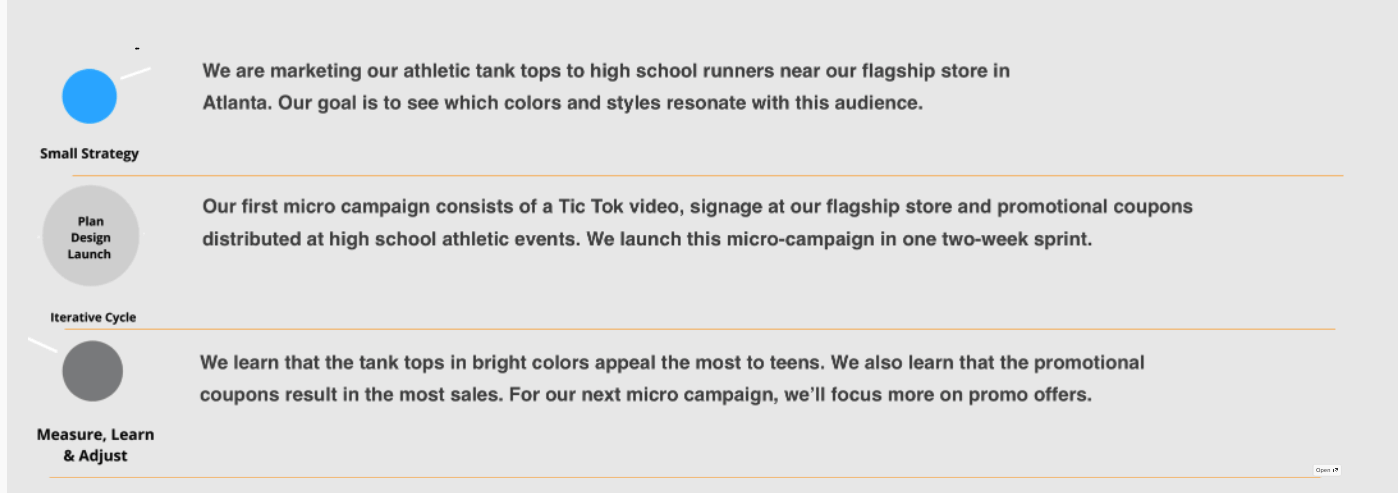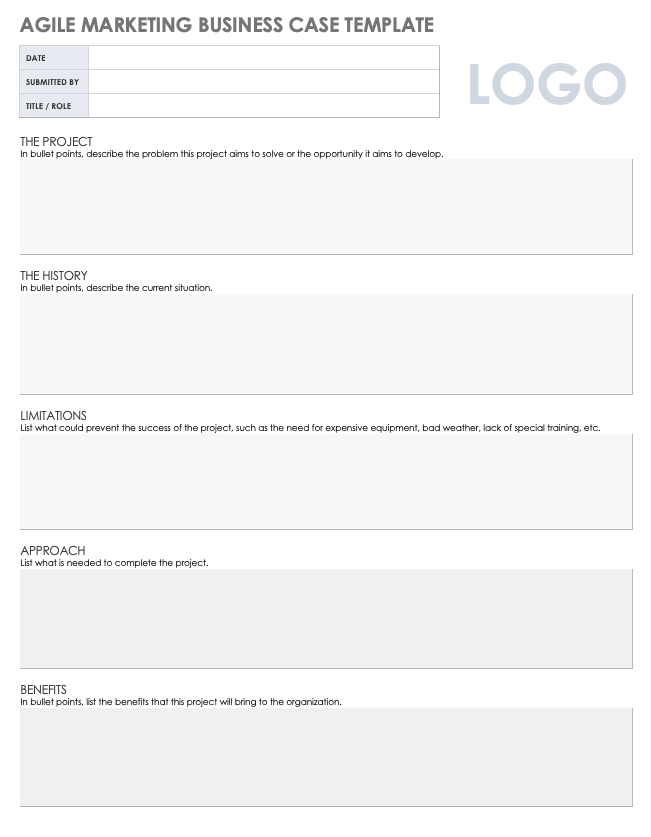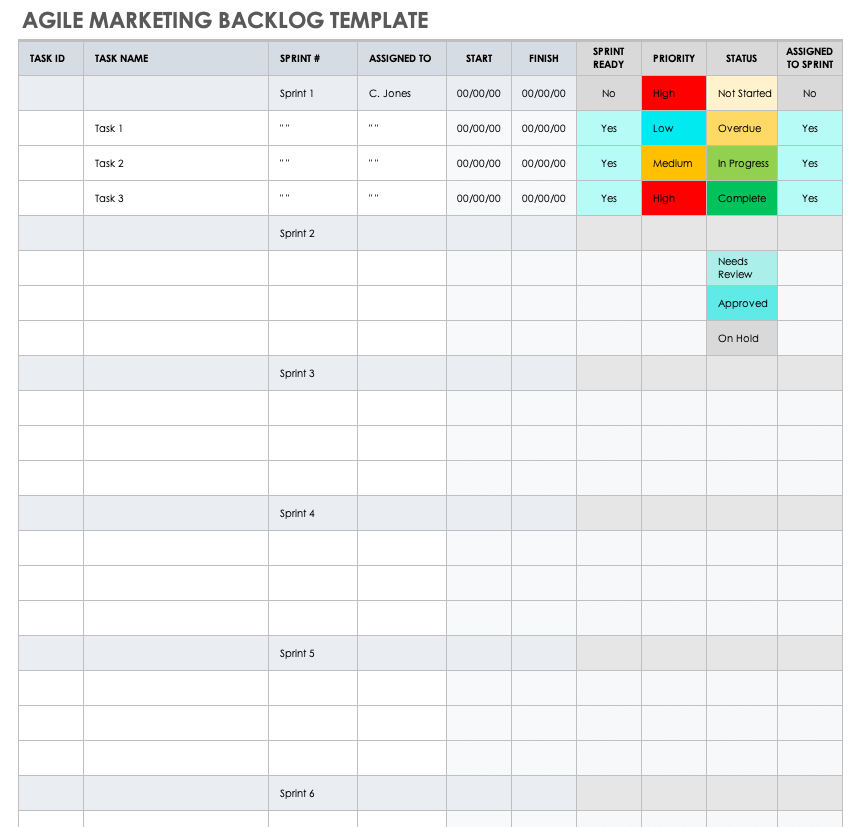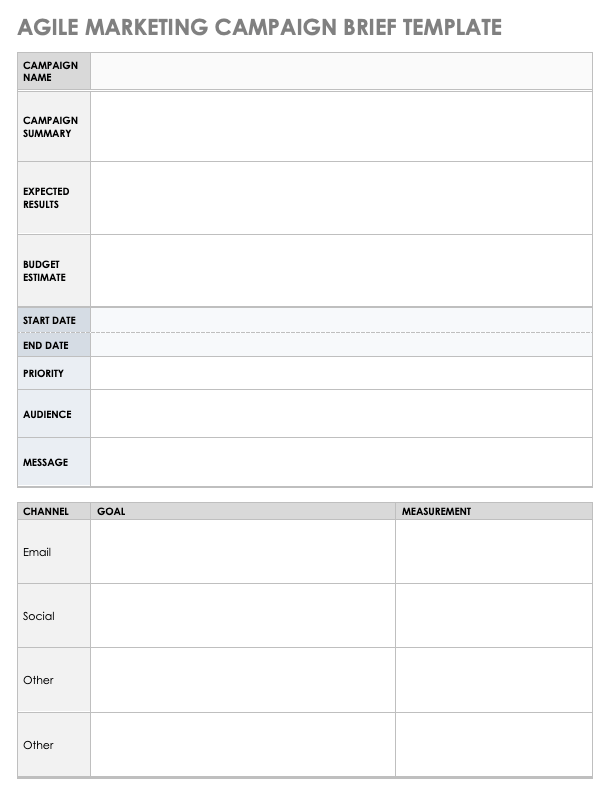What Is Agile Marketing?
Agile marketing is the application of the Agile methodology to the discipline of marketing, with the goal of improving marketing operations. The marketing team works together to identify and quickly deliver impactful projects.
Organizations that adopt Agile marketing find value in their newfound ability to quickly pivot when the market changes. To do so, the marketing team takes on smaller iterations rather than large campaigns. By monitoring campaign performance throughout the lifecycle of a campaign, marketers remain adaptable.
To learn more about marketing values and principles, please refer to our Agile marketing manifesto article.
What Is an Agile Marketing Example?
Many businesses, large and small, follow Agile marketing techniques. Below, you’ll find examples of companies that are using Agile marketing successfully, as well as Agile marketing campaign and strategy examples.
Examples of Companies Using Agile Marketing Successfully
ISBX, General Mills, Mozilla, IBM, and ING are just a few of the many companies that rely on Agile marketing. These companies apply the values and principles of Agile in a way that works well for their unique businesses.
General Mills is a household name, well known for its breakfast cereals. CEO Jeff Harmening is a highly respected innovator of this multinational consumer foods giant. In 2019, at the Consumer Analyst Group of New York (CAGNY) Conference, Harmening shared details about the company’s adoption of “consumer-first design.” This Agile approach to launching new products faster stresses speed over perfection and incorporates consumer feedback early in development. In his presentation, Harmening emphasized the importance of “deeply understanding the needs and lives of our consumers and responding quickly to give them what they want.”
Mozilla began in 1998 as an open online community where people could create free software, specifically browsers, to enhance one’s internet experience. In 2016, the Mozilla marketing team began transitioning to Agile. Although the Agile workflow allowed for increased flexibility, the team still had difficulty incorporating part-time or occasional workers. In fact, this issue posed a major challenge to the company’s transition efforts — but, as an organization that values transparency, openness, and participation, Mozilla was determined to overcome this challenge and ensure that all workers could participate, regardless of their employment status. The marketing team achieved this goal by providing all workers with access to tools and information (including a list of available tasks) and the opportunity to participate in conversations.
CMO of IBM Michelle Peluso, a legend in the world of marketing, dismantled the company’s traditional marketing silos and built Agile teams among IBM’s 5,000 marketers. Each team now prioritizes its own work, which helps to facilitate a faster-paced, more collaborative environment focused on continuous improvement. For more information on IBM’s application of Agile principles, see Peluso’s presentation on how IBM is reinventing marketing with an Agile approach.
Netflix and Spotify, two particularly cutting-edge corporations, inspired ING to adopt an Agile approach to business. ING began by setting up squads, teams of eight or nine members from various disciplines, such as marketing, product management, development, IT, and user experience. A squad product owner is responsible for moving the team through its backlog and to-do list.
Agile Marketing Campaign Example
Agile Retail leverages the ability of Agile marketing to respond to new retail demands. The company recognizes the significant negative impact that inflexibility and a general lack of agility can have on physical retail stores.
Agile Retail’s mission is to ensure that retailers have the flexibility they need to meet current consumer buying habits. In this radically new retail landscape, achieving such flexibility requires short-term leases, semi-permanent structures, and scalability, as well as the ability to quickly transition based on consumer needs.
Marcus Fox, Managing Director of Agile Retail, says, “Agile Retail solves the problems facing physical retail today: the legacy structures, lack of inspiration, and operating procedures that stifle adaptability. We deliver the retail experience that today’s consumer desires. We also provide the staffing, operations, and property solutions that enable [retailers ] … to adapt, test, and pivot quickly.”
Agile Marketing Micro-Campaign Strategy Example
Marketing teams must act quickly to get the most out of every opportunity. An Agile marketing strategy allows you to transition from expensive, lengthy campaigns to micro-campaigns, which require the flexibility of short sprints.
Stacey Ackerman is an ICAgile Instructor, a Certified Scrum Professional, and the Founder of Agilify Coaching & Training. She shares an example of an Agile micro-campaign in the document below, which contains the campaign strategy, intentions, and measurements, as well as opportunities for improvement. Additionally, the micro-campaign includes the team’s lessons learned from the campaign, as well as next steps. This campaign style calls for shorter, more iterative campaigns, with close performance monitoring. In order to support the fast pace of marketing, the approach also requires intelligent, quick responses and shifts in spending.
Agile Marketing Case Studies
Agile marketing success stories offer an opportunity to learn from real-world situations. Below, you’ll find case studies from ISBX and Premier, Inc., which provide context and data to demonstrate the value that Agile marketing brings to these unique organizations.
ISBX, a leading software development and consulting agency that serves global brands including Apple, Nike, L'Oréal, Warner Bros., Lexus, and Red Bull, embraces Agile marketing.
Arthur Iinuma, Co-Founder and President of ISBX, says, “Our traditional marketing practices were based on long-term goals and projects. As we expanded, we struggled to keep up with client needs and expectations. After implementing Agile marketing, we began structuring our work in two-week-long sprints. This allows us to break down projects into smaller chunks, which gives us greater versatility in assigning team members according to their talents. We no longer rely on external contractors. Instead, we apply those funds to our internal team to further increase our agility.”
ISBX’s results are notable: “After switching to Agile marketing, we now have a 90 percent completion rate for our sprint tasks, 25 percent cost savings, and a 35 percent increase in our client satisfaction rating,” says Iinuma.
Premier, Inc., a healthcare company headquartered in Charlotte, North Carolina, took on an Agile marketing pilot amidst a healthcare crisis. The Premier, Inc. team had completed Agile marketing training shortly before the 2020 global pandemic. The team quickly chose to pilot the Agile approach for near real-time communications. Through daily stand-ups, sprints, testing, and lessons learned from data, the team improved its collaboration, communication, teamwork, and release time. You can access this entire case study at Agilify Coaching & Training.
Agile Marketing Campaigns vs. Big-Bang Campaigns
A big-bang campaign is a marketing campaign that involves months of planning, detailed calendars, and high costs. By contrast, Agile marketers can plan and execute their campaigns in as little time as a week.
Ackerman provides the following example of Agile marketing based on television advertising: “Executing traditional, big-bang television spots involves extensive planning and a hefty budget. However, when an Agile marketing team works on a TV commercial, it can do a lot of small tests before planning an entire spot. The team can use other, less expensive channels, such as social media, to see how music, images, and messaging perform. Finally, when the members of the team know they are on the right track, they make the commercial. It’s a constant state of testing, learning, testing, and learning.”
Agile Marketing Templates
These Agile marketing templates will help your Agile marketing team prepare and operate with more agility.
Agile Marketing Business Case Template
Download Agile Marketing Business Case Template
Use this Agile marketing business case template to share how Agile marketing will benefit the organization. The business case template provides a clear overview of the project and its purpose, challenges, approach, and benefits.
Agile Marketing Backlog Template
Download Agile Marketing Backlog Template
Microsoft Excel | Google Sheets
A marketing owner can use this Agile marketing backlog template to track a wish list of marketing tasks. Remove each task from the backlog once the team tackles it in a new sprint. The template includes fields for each task, sprint, assignee, and priority level.
Agile Marketing Campaign Brief
Download Agile Marketing Campaign Brief
Microsoft Word | Adobe PDF | Google Docs
Use this Agile marketing campaign brief template to plan, organize, execute, and learn from an Agile campaign. Use the template to outline the purpose, timeline, and method for measuring the success of your campaign.
Is Agile Marketing Right for You and Your Team?
Effective Agile marketing depends on collaboration, transparency, and flexibility. And, while the success stories above may encourage you to transition to Agile, you must understand the approach and make sure your team is on board before taking the leap.
Quickly Deliver Impactful Agile Marketing Campaigns with Smartsheet
The best marketing teams know the importance of effective campaign management, consistent creative operations, and powerful event logistics -- and Smartsheet helps you deliver on all three so you can be more effective and achieve more.
The Smartsheet platform makes it easy to plan, capture, manage, and report on work from anywhere, helping your team be more effective and get more done. Report on key metrics and get real-time visibility into work as it happens with roll-up reports, dashboards, and automated workflows built to keep your team connected and informed.
When teams have clarity into the work getting done, there’s no telling how much more they can accomplish in the same amount of time. Try Smartsheet for free, today.







